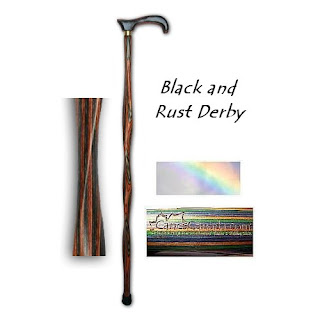It distresses me when I hear people tell me how they “hate” using a cane and will try to avoid it at all costs. What people done realize is the actual “costs” associated with not using a cane or walking aid when needed. Canes and other walking aids give us freedom and independence.
Anyone who has had to rely on one should be able to tell you the benefits of using a cane that is the correct length a comfortable grip and used properly to help offset your weight to provide pain relief as well as the extra security of being balanced when we walk. When we use a family member as a support – or offer to let a family member use us as a support, we tend not to think of the long term injury that can be caused. Anytime we put additional weight on one side of our body, other muscles have to compensate causing strain and possible injury of them as well.
Common sense should tell us that it is OK to offer assistance to someone in need, however it your spouse is constantly using you instead of a cane, you may find that sore shoulders, arm, knee and back aches showing up over time as you must adjust your gait to accommodate the extra weight being constantly applied to one side.
The same is true for people who make the decision to use a cane that their Uncle, Mother, Friend had been using and it is either too long or short for you. Even if you are approximately the same height, because body type differs you need to make certain that the cane you are using is fitted correctly to you. Using a cane that is too long or short will put constant strain on muscles that will result in long-term problems with necks, shoulders, backs etc.
To use a cane the way it was meant to be used follows a few very basic rules.
Number One is that the cane is being used to improve your balance by bearing some of your weight on the injured side. Imagine a tri-pod, when using your cane you should be stepping out with your injured side and your cane at the same time thus allowing your weight distribution to be even helping your gait to be more natural. Click here to see how to walk with a cane.
.
Is it the correct length? Is the grip comfortable? And lastly, have you checked for wear & tear on the tip - checked to make sure there are no cracks or bowing that would interfe with the integrity of the cane.
Of course, It is always best to discuss your individual situation with a knowledgeable professional to determine the best way for you to walk with a cane.
Take a moment to see some of the stylish canes that have just arrived for spring at CanesCanada.com














